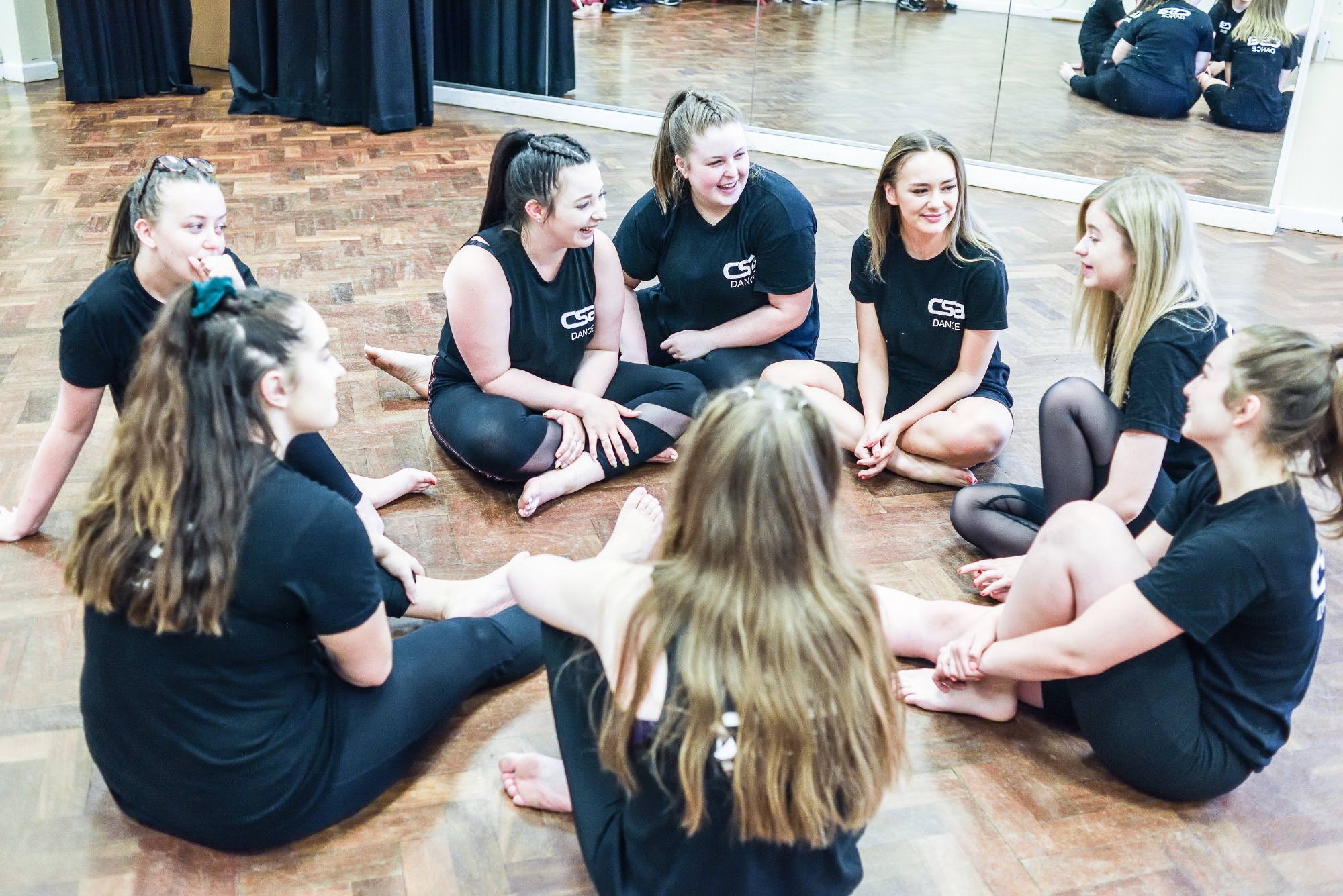The course offers a lot of variety with insight into different dance styles & fusions and provides a good stepping-stone into the A Level course should students wish to pursue those courses after GCSE.
This is a linear course, meaning that students will sit all their exams and submit all their non-exam assessment at the end of the course in Year 11.

CORE CONTENT:
-
Performance – 30%
-
Choreography – 30%
- Dance Appreciation – 40%
In Year 9/10 of GCSE Dance you will:
- Develop an understanding of health, fitness & safe working practice
- Develop physical & technical skills necessary for effective performance
- Learn ‘set dances’ that every GCSE Dance student must learn in order to perform both a solo and a duet/trio piece of coursework
- Begin studying the ‘Dance Anthology’ which focuses on 6 professional dance works
- See professional dance in action in the form of either workshops or live performances
- Perform in the Annual Dance Show at Dance East
In Year 11 of GCSE Dance you will:
- Develop expressive skills & an understanding of how to achieve high quality performance
- Enhance your understanding of the relationship between choreography, performance & production
- Develop your understanding and critical analysis of the 6 professional works
- Create your own choreography in response to an exam question provided by AQA
- Perform in the Annual Dance Show at Dance East
ASSESSMENTS
Students must complete both assessment components.
Unit 1: Internally marked and externally moderated
Performance – 30% of GCSE / 40 marks
- 2 Set phrases through a solo performance (approximately 1 minute in duration)
- Duet/trio performance (3 minutes in a dance that is a maximum of 5 minutes in duration)
Choreography – 30% of GCSE / 40 marks
Solo or group choreography – solo (2 - 2½ minutes) / group dance (3 - 3½ minutes)
_______________________________________________________________________________________________
Unit 2: Externally marked by AQA
Dance Appreciation – 40% of GCSE (1½ written paper / 80 marks)
-
Knowledge and understanding of choreographic processes and performing skills
-
Critical appreciation of own work
-
Critical appreciation of 6 professional works
What is next after GCSE Dance?
-
Further education in A level Dance which may lead onto a degree in dance at university
-
Performing
-
Choreographing
-
Teaching
CURRICULUM MAPS:
The topics we study are outlined in our curriculum maps:
How will my child be assessed?
|
|
Assessment and Feedback Outline Approach |
|---|---|
|
KS3 |
5 units of practical PE are taught per year group. Each one is assessed against GCSE PE criteria in regard to skills and application to games/performance. These are subjective on going assessments but completed at the end of a block of work. 2 units per year have a formal summative assessment which on the theoretical aspects of PE that related to GCSE topics. These have short answer questions and 1 longer prose. They peer assessed initially then moderated by the staff. During practical activities there is time for plenty of peer and self-assessment. |
|
KS4 |
PE Year 9, 10 & 11 - Each topic delivered has an end of unit test which receives detailed written feedback. We set longer answer questions for both homework and during class time that received detailed feedback. Mock exams in Year 10 and 11 also have detailed written feedback. In addition, key 9 mark questions are identified and time given to go over with scaffolding provided when necessary. Mark schemes and model answers are used at this point. Stater activities involved 10 minute quizzes. Exam questions in class and homework are used throughout the years with peer assessment a major part of the learning process. Practical assessment in summative, subjective process Dance As above except practical assessment is a formative process at the end of unit based upon exam focus. Duo, trios and set study work maybe attempted during this time. Detailed assessment occurs during written work which is varies between long and short questions at the end of each unit. Mock exams for each year are detailed and have DIRT with in the process. |
|
KS5 |
PE Shorts answer questions are performed as starter tasks with peers marking each other’s work from marks schemes. End of unit tests are performed early in Year 12 to assess initial understanding and aptitude for the course. Mock exam are mark in detailed with DIRT as large part of the process alongside mark schemes and model answers. Dance As above except practical assessment is a formative process at the end of unit based upon exam focus. Duo, trios and set study work maybe attempted during this time. Detailed assessment occurs during written work which is varies between long and short questions at the end of each unit. Mock exams for each year are detailed and have DIRT with in the process. |